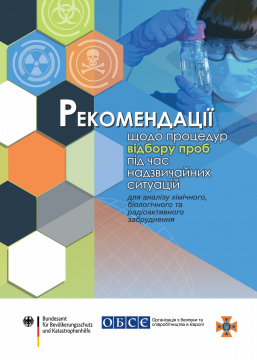Guidelines on Emergency Sampling Procedures for Analysis of Chemical, Biological, and Radioactive Contamination

When responding to emergencies related to the spill (release) of hazardous substances, it is critical to determine the risks and threats these substances carry. Further determination of the necessary measures for response, localization, and liquidation of the consequences of an emergency depends on the results of identifying the substance and understanding the scale of the threat it poses. Sampling is a crucial part of the process of identifying an unknown substance. Therefore, the procedures for selecting various types of samples, their packaging, and transportation require clear rules and methods. The guide provides practical and step-by-step guidance on sampling processes that potentially contain hazardous chemical, biological, radiological, or nuclear materials.
The manual in Ukrainian was developed with due regard to the experience and methodological developments of the rescue services and other relevant departments of the Federal Republic of Germany, the United States of America, and Finland. The "Guidelines on Emergency Sampling Procedures" were developed by the joint effort of the German Federal Office of Civil Protection and Disaster Assistance (BBK) and the Organization for Security andCo-operation in Europe (OSCE) and published with the financial support of the German Federal Foreign Office.
The views, opinions, conclusions and other information expressed in this document are not given nor necessarily endorsed by the Organization for Security and Co-operation in Europe (OSCE) unless the OSCE is explicitly defined as the Author of this document.
